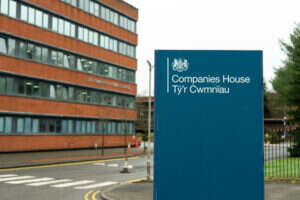
This year marks a decade since the government launched its G-Cloud procurement framework. Despite sounding suspiciously like a rejected product name found on a whiteboard at Google headquarters, G-Cloud has been something of a success, helping government departments and other public sector organisations embrace cloud computing.
Indeed, Crown Commercial Service, the government’s procurement agency, says G-Cloud has delivered commercial benefits worth £1.5bn to public sector buyers since its inception in 2012.
Speaking earlier this year, Heather Wheeler, then-Cabinet Office minister (she left her post earlier this month when Liz Truss took over as prime minister) said: “It often goes unnoticed but initiatives such as the setting up and implementation of the G-Cloud agreement are exactly the sort of innovation this government is seeking to embed across departments.”
But while G-Cloud has made a positive impact in driving cloud adoption in government, the technology’s use across the public sector as a whole remains patchy. Updates to the framework are also slowing down, which can leave organisations who buy through the framework without access to the latest technologies.

What is G-Cloud?
The G-Cloud framework is made up of more than 5,000 suppliers offering 38,000 cloud-based digital services accessed through a digital marketplace. Using it, public sector buyers can search and buy cloud infrastructure or apps to suit the needs of their organisation without the need for a full tendering process. It was designed to mimic the US government’s Federal Cloud Computing Strategy, which mandated agencies to prioritise cloud systems.
“It’s done really well after a slow start,” says Chris Farthing, CEO of Advice Cloud, which advises buyers and sellers in the public sector cloud market. “It took some time to ramp, but around 2015-2016 it started to ‘hockey stick’ up, and now it’s doing £2.5bn a year.” Indeed, G-Cloud’s latest iteration, G-Cloud 12, was by the far the most popular government procurement framework across all areas of the public sector, not just technology, in 2021, according to data from Tussell’s most recent public procurement report.
G-Cloud really started taking off when the government's "cloud first" policy kicked in. Designed to encourage public bodies to evaluate cloud-based solutions as a first option, it was introduced in 2013 alongside an ambitious target of 50% of public sector computing spend being moved to cloud services within two years.
Though this target was not hit, the majority of departments are now deploying cloud services, either through partnerships with a specific vendor or through multi-cloud strategies, picking and choosing different services. The tech team at the UK Parliament, for example, has formed a strategic relationship with Microsoft and is using its Azure cloud platform to rearchitect its systems for the cloud. The Crown Prosecution Service, meanwhile, uses a mix-and-match approach, deploying workloads on Azure, Amazon’s AWS and Oracle.
Perhaps unsurprisingly given the dominance of the public cloud market by the hyperscale providers, AWS was the biggest beneficiary of G-Cloud contracts last year, pocketing £157m from 57 contracts, almost double the second most popular vendor, Deloitte (£83m). Microsoft garnered £33m from public contracts on G-Cloud over the same period.
Is the public sector running to the cloud’s warm embrace?
But while public sector cloud spending is on the up, many of the increases are coming from government departments. The biggest buyer through G-Cloud last year was the Home Office, which spent £265m, followed by the Department for Work and Pensions (£167m) and the Ministry of Justice (£138m).
Away from Whitehall, enthusiasm for the cloud remains lower. Of the £2.8bn spent through G-Cloud last year, just £700,000 came from non-central government sources.
For many public sector organisations, moving to the cloud is seen as too much of a risk. Cloud vendor UK Cloud’s most recent adoption survey, which polled 300 public sector organisations, found that 85.2% of respondents are reluctant to move workloads to the cloud because of security or risk concerns. Fear of over-reliance on a particular vendor was the biggest worry among these tech leaders when it comes to the cloud.
Fear of failure was cited as a blocker to cloud deployments by 73% of respondents, the reason being that big investments in newer technology areas such as cloud can be risky. An example of things going wrong emerged last week, when HM Courts and Tribunals Service paused the roll-out of ‘Common Platform,’ a £300m cloud-based case management system intended to simplify life for court staff. Instead, it appears to have had the opposite effect, with clerks “having to spend ludicrous time and energy” checking court documents, according to one judge quoted in The Times, because “the system won’t work to let them do what they have told it to do.” Frustration at the system’s unreliability is running so high that the PCS, the civil service’s union, has threatened strike action if it isn’t altered.
A spokesperson for HMCTS said a common platform is essential to the modernisation of the court system. Furthermore, they said, “We will continue to work closely with staff to support them through this transition – including listening to their views on the pace of roll-out - and want to thank all the judges, court staff and others who have contributed to its design and implementation.”
The future of G-Cloud
G-Cloud 13, the latest iteration of the framework, is due to be released on 9 November, with an updated list of suppliers and services.
Version 13 was meant to arrive in August, but CCS decided to delay its release to give it more time to refine the user experience. “We are focused on ensuring the user testing is informing the final product and this has identified further feedback and insight that we need to consider in more depth before we can roll this out to our customers,” a CCS statement said.
Farthing said this reflects a trend of increasing delays on updating the framework, which means buyers do not always have immediate access to the latest technologies.
“It used to be refreshed every six months, then that slipped to eight months, and now you’re looking at every 18 months-two years,” he says. “That’s a long time in the cloud; things move on and services develop, which means government departments don’t always have access to cutting-edge technology.”
But he says that for public sector tech leaders, G-Cloud is likely to remain a key way to buy cloud apps and services. “There are other decent routes to market, but overall in terms of simplicity I think G-Cloud is the best framework out there. It has its faults, but it also has enormous scale and it delivers every year.”






